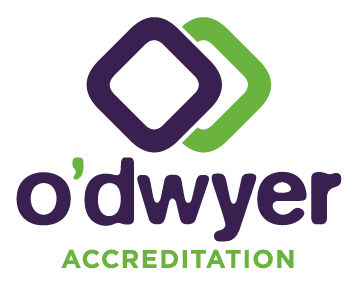You’ve decided your lab would benefit from ISO 17025 accreditation. What happens next?
To make the process as smooth as possible and get the most out of it, you need to first understand these key steps.
Step 1 – Research what your clients need
Decide which tests (and methods) your laboratory will need to offer (‘scope of accreditation’). Only one point of view counts in this: what your clients need or want from you. What tests are they asking you for? How will they be using the results you provide?
In some cases, you may need to read up on the regulations your clients are working with to determine if particular methods or techniques are specified. If you know this before commencing with your ISO 17025 accreditation process, you’ll save a lot of time by knowing exactly which of NATA’s technical requirements your laboratory must meet.
Next, you want to contact NATA to let them know that you want to get accreditation. NATA will then point out the relevant accreditation requirements you need, and you can also ask them for a cost estimate at this stage.
To help you communicate with NATA, look up the scope of accreditation of a few competitors in the NATA Directory and see how they are written. NATA will “get it” and be able to assess your application much quicker if you can use similar language to another lab’s scope.
Once you have copies of the accreditation documents, you are in for some serious study. Review the documents, consider how your laboratory meets the criteria and identify areas that need attention. A good approach for this is a gap analysis.
Step 2 – Develop your quality system
Develop any processes or procedures that are missing from your system. If you haven’t already, start conducting internal quality system audits. You also need to hold a management review meeting.
Step 3- Arrange your NATA advisory
Ask NATA to come and do an Advisory Visit at your laboratory.
This is a fairly informal process, but NATA will give you feedback on your quality system and any obvious gaps in operations. Now is a great opportunity to ask questions about specific ISO 17025 accreditation criteria and how to apply them in your laboratory.
Step 4 – Schedule a NATA assessment
Once you’ve sorted out any issues raised during the advisory visit, NATA will arrange an assessment.
This assessment will be far more technical in focus than the advisory visit. A volunteer assessor from an industry similar to yours will review all the technical aspects of your laboratory. Meanwhile, the NATA lead assessor will review the quality system in detail.
Step 5 – ISO 17025 assessment follow-up
NATA will leave you with a detailed assessment report, including non-conformances.
These ALL need to be addressed before NATA grants you ISO 17025 accreditation. Sometimes this stage can drag on a bit, so be patient!
Step 6 – Recieve your ISO 17025 accreditation
NATA will send you a certificate that you can proudly put on display.
You can start issuing NATA-endorsed test reports and using the NATA logo in your marketing materials from the date of accreditation.
Maintaining your ISO 17025 accreditation
No, you don’t get to sit back and relax after all that!
NATA regularly returns to re-assess your laboratory and quality system. The typical schedule for ISO 17025 laboratories is:
Year 0 – Technical assessment
Year 1.5 – Surveillance visit
Year 3 – Technical assessment
A NATA staff member conducts the surveillance visits alone, so they have much less technical content than the technical assessments. The technical assessments are usually a repeat of the initial assessment – the assessor can review any relevant aspect of your laboratory operation.


